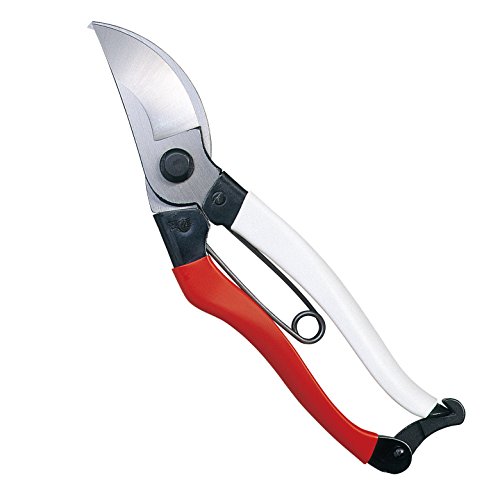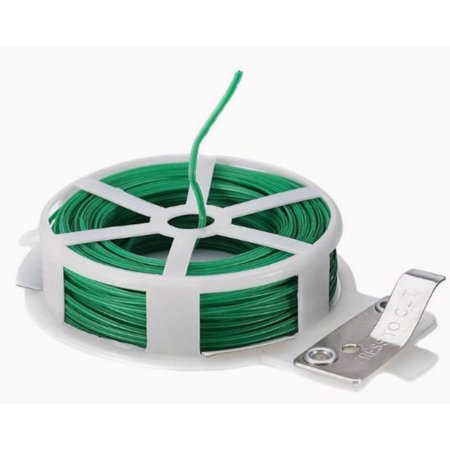Best climbers to grow in pots – 5 easy-to-grow vines that will transform small spaces with vibrant color
Make the most of small terraces, patios and balconies by filling pots with colorful climbers
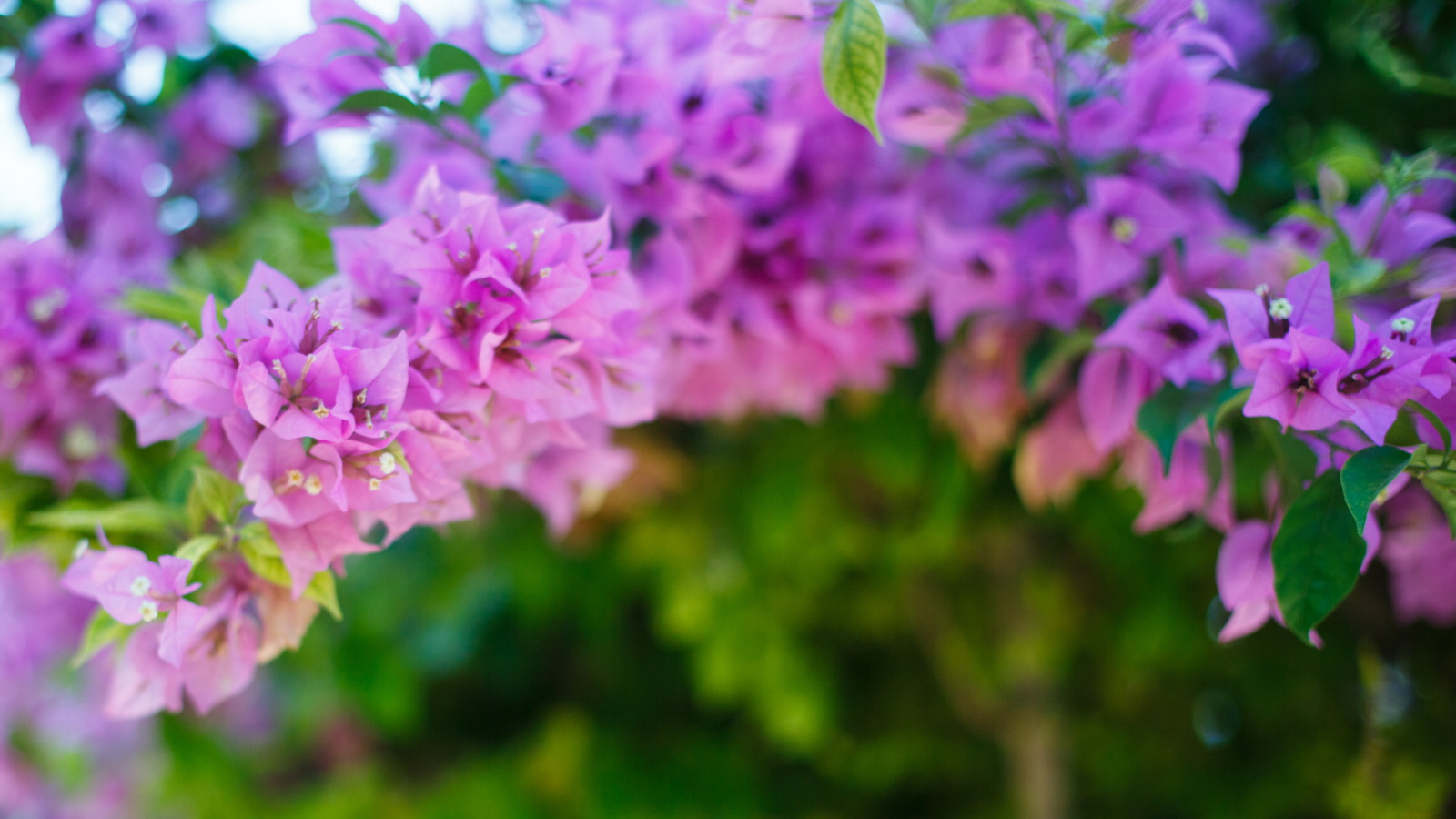

Climbers can be transformative in a garden setting. Whether you have a small, shady balcony or a south-facing tiny terrace, some of the best climbers to grow in pots can be used to great effect, making the most of vertical surfaces and thereby creating a green, living backdrop.
As a former professional gardener, I have planted and maintained many different vines in pots. From large vases with old and gnarly wisterias to low terracotta pots with sweet peas, I have cared for too many to count. Climbing plants can, I think, elevate even the smallest of spaces, and container growing can even be the preferred method for some vigorous species that like to spread.
Here, I share five of the easiest climbers to grow in pots, including evergreen and fragrant options. So, whether you want to cover a pergola with blooms or hide an ugly wall, these are some of the best climbers to grow in pots.
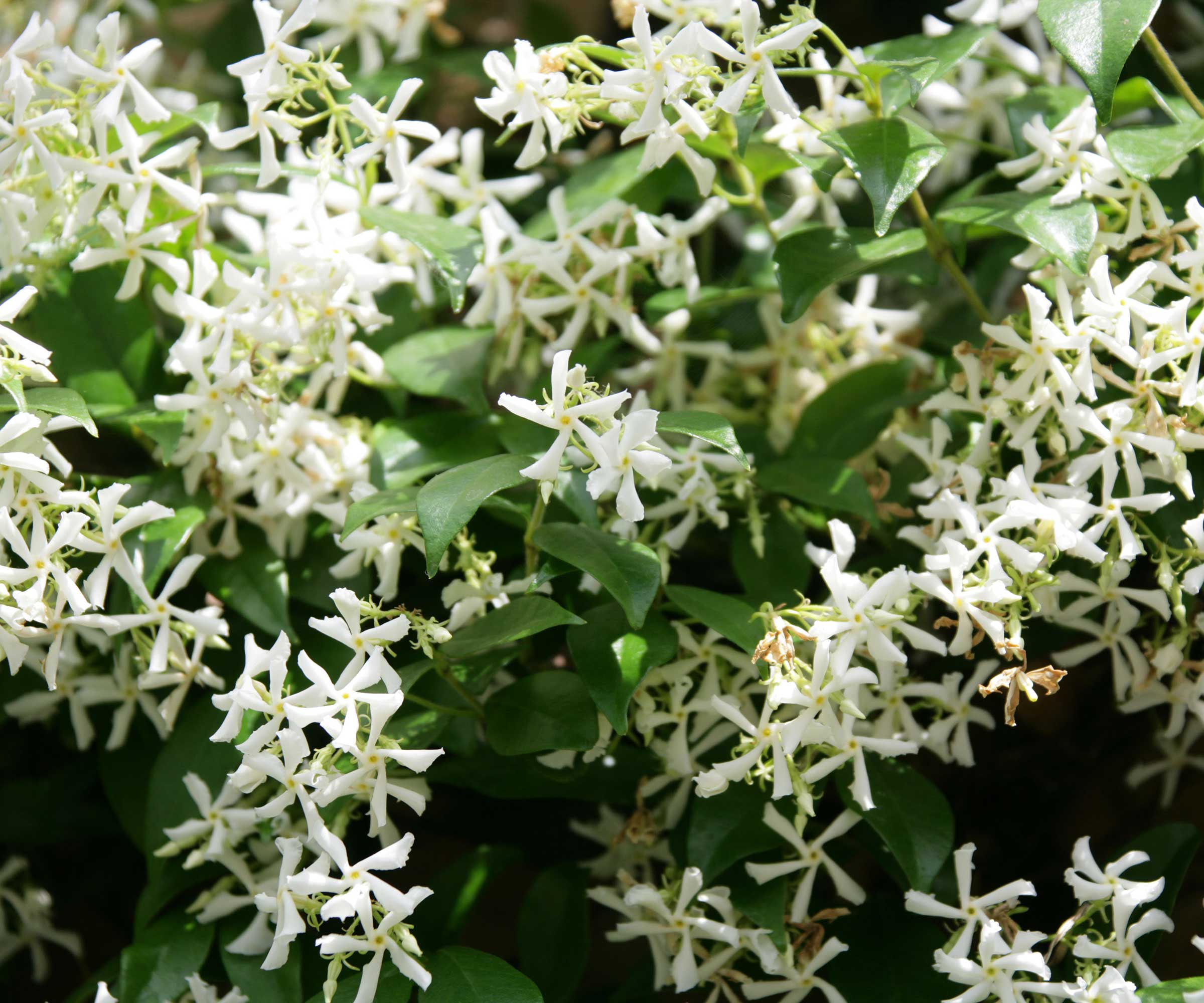
Best climbers to grow in pots
When choosing climbing plants, it’s important to consider what is most appropriate for your climate and US hardiness zone. Some flowering climbers will prefer full sun, while many evergreen foliage vines might prefer shade. Whatever you opt to grow, just be sure it is well-suited to your yard.
1. Trumpet vine
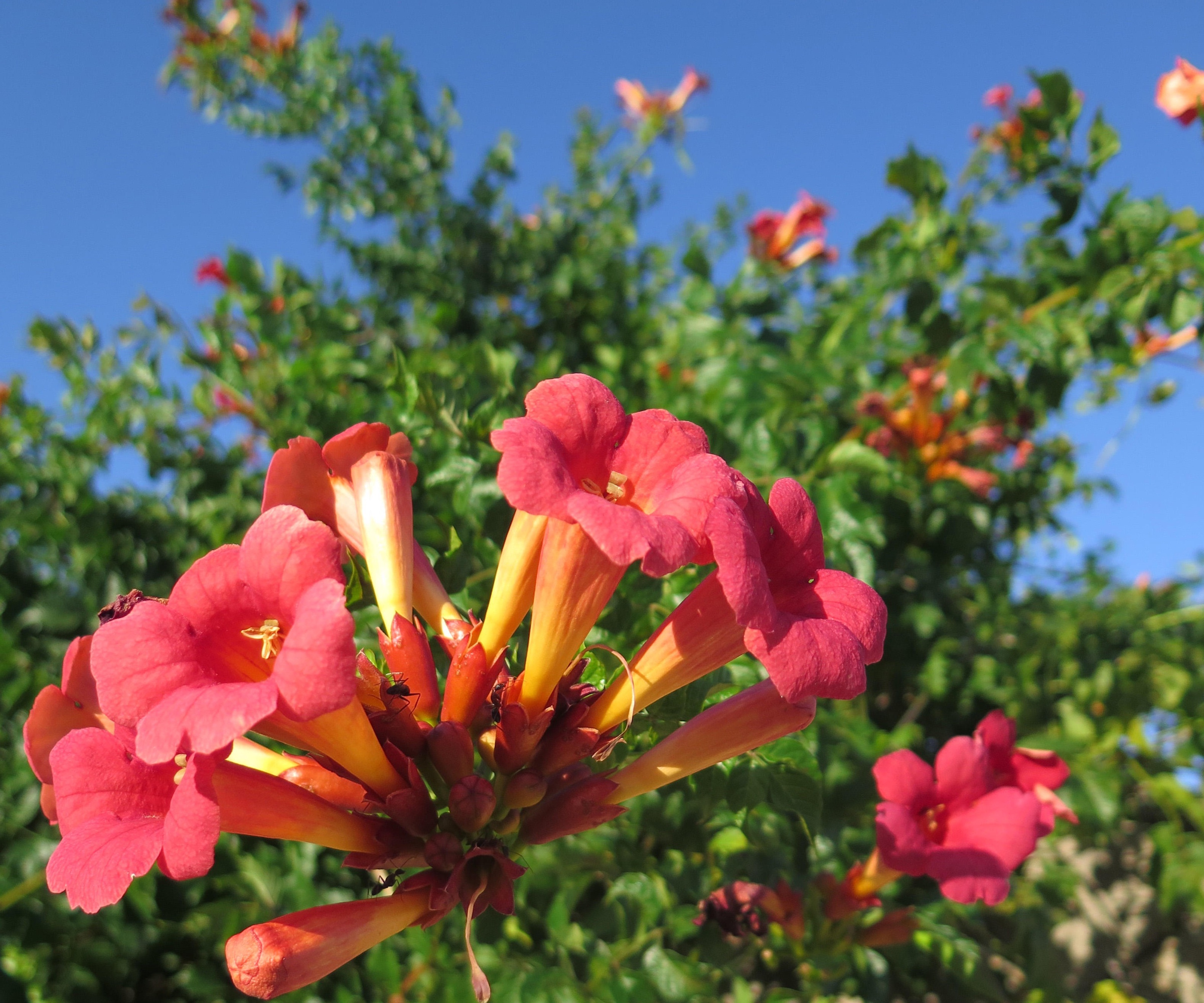
'The trumpet vine, or Campsis radicans, is one of the best climbing plants that thrive on neglect, and is well-suited to container culture,' says plant expert from Wisconsin, Katie Sunderlage.
'Native to North America, many gardeners consider this vigorous vine to be an invasive climber, largely because it can produce 40 feet of growth in a single year.
'However, in a container, its spread can be limited,' Katie advises. 'In terms of how to grow trumpet vine, it does best in US hardiness zone 4 to zone 10, with a preference for at least four or so hours of sunshine each day.
Design expertise in your inbox – from inspiring decorating ideas and beautiful celebrity homes to practical gardening advice and shopping round-ups.
'And the best part? The trumpet blooms will attract hummingbirds and butterflies to your yard all summer long. Just be sure to keep it trained to a trellis or wire framework, pruning as and when necessary.'
Live starter trumpet vine plants are available from Walmart.

Operations Manager at Holland Group, managing the customer service department and purchasing. Katie has been in the green industry since 2005 in the Greater Milwaukee area, earning her degree in Horticulture in 2008. She has been able to share her love for plants working in multiple garden centers, in sales positions and most recently in an online retail platform at Holland Group.
2. Star Jasmine
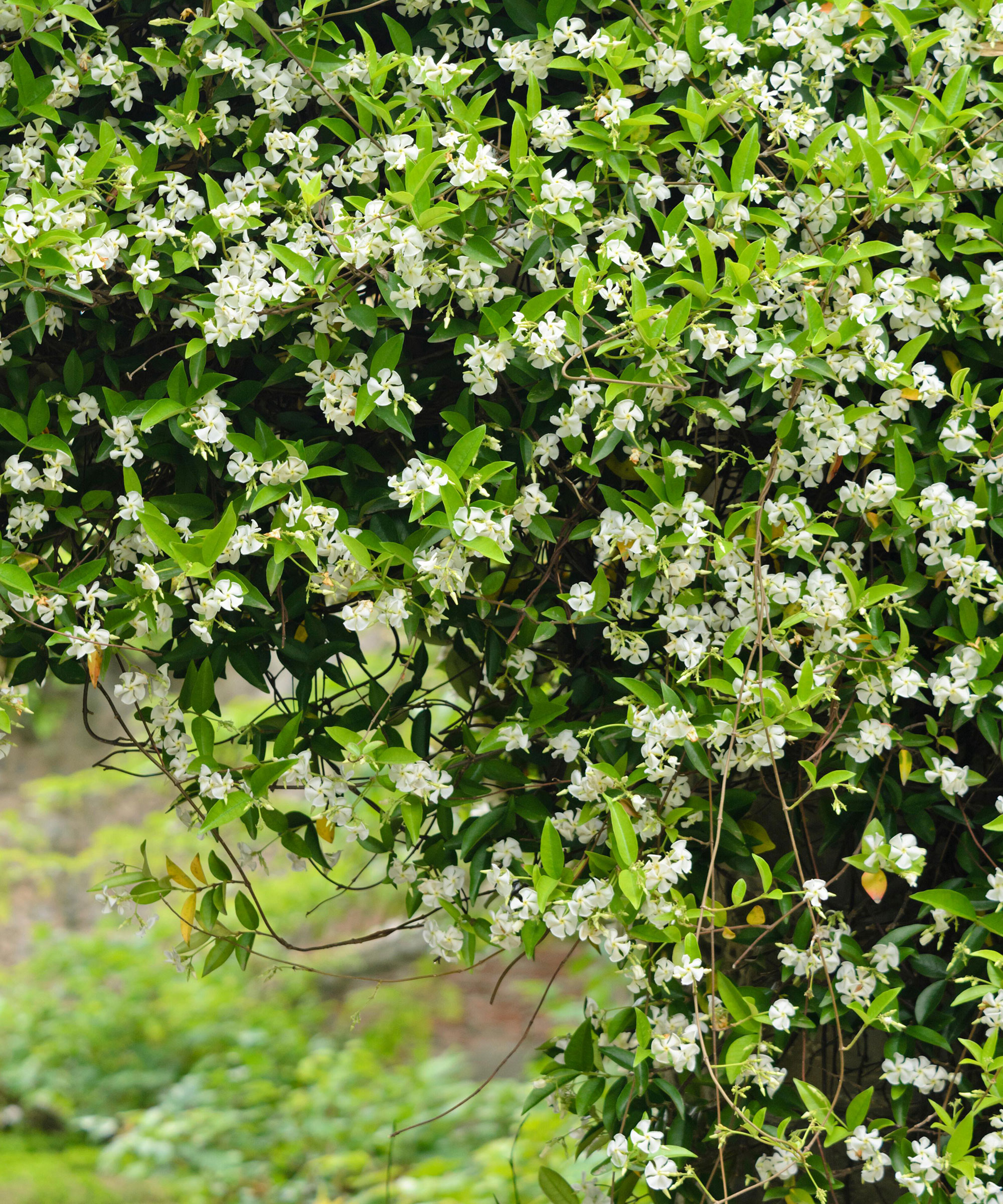
Star Jasmine, or Trachelospermum jasminoides, is one of the best evergreen climbers, providing a lush, colorful backdrop to any-sized plot.
Known for its white flowers and sweet fragrance, star jasmine does best from US hardiness zone 8 or higher. I have grown this fast-growing vine in several public and private gardens where I have worked as a professional gardener, and it adapts to most conditions, whether sunny or shady.
'In terms of how to prune star jasmine, this vine is vigorous, and 'can produce several feet of growth in a single season,' says Mike Murphy, plant expert and owner of You Had Me At Gardening.
'Regular and consistent pruning ensures that your vine maintains a tidy and compact appearance,' Mike says, 'so do not be afraid to snip as and when necessary, making cuts above a shoot or bud.'
Star jasmine live plants are available from Amazon.

Mike is the owner of You Had Me At Gardening. He grew up gardening with his parents and grandparents. He enjoys his backyard orchard of dwarf fruit trees, raspberry and blackberry patches, and raised garden boxes. In addition to his perennials, Mike enjoys sprouting new fruit and vegetable seeds every spring.
3. Clematis

There are hundreds of clematis varieties that are ideal for pot growing. From the popular pink-flowering Clematis montana to the large and attention-seeking 'Nelly Moser', most options can be grown successfully in containers.
However, one of the best clematis species for year-round color is the evergreen Clematis armandii. In terms of how to grow evergreen clematis in containers, the rules are much the same as they are for all clematis in pots, with part-sun-part-shade and good drainage vital for plant success.
'Clematis armandii performs best in sun but can handle shade too,' says Alex Kantor, owner of Perfect Plants Nursery. 'In cooler areas, including US hardiness zone 6, be sure to give them as much sunshine as possible, whereas in warmer regions, such as US hardiness zone 9, some afternoon shade is a good idea.
'Annual pruning is important for this vine,' Alex adds, 'as without cutting, they can reach up to 20 feet in length.'
For a crimson red clematis, try the 'Rouge Cardinal' variety, available to order online from Amazon, which would look spectacular growing in a container and trained along an obelisk or trellis.

Alex has worked in the horticultural industry for over 20 years and grew up on the farm since his childhood years. Alex is an expert on landscape trees, shrubs, and indoor plants. He is passionate about growing and helping others learn the trade.
4. Chocolate Vine
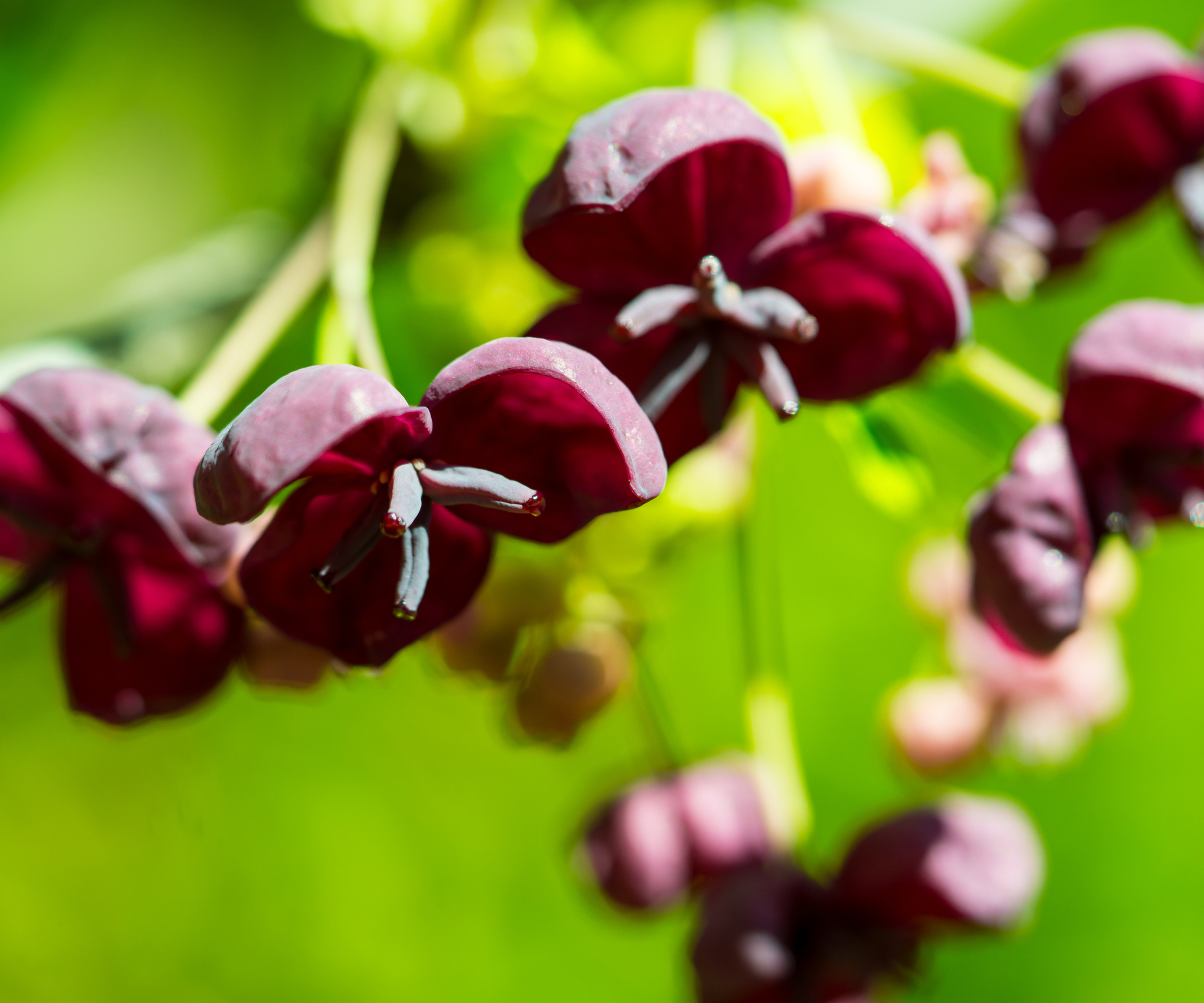
For one of the best fast-growing climbing plants to grow in containers, the chocolate vine, or Akebia quinata, is a good choice.
Be warned, however, that this aggressive climber is considered an invasive plant in several eastern US states, including Florida. So, while growing it in pots is a clever way to control its spread, gardeners unable to regularly monitor its spread might be better off growing a less vigorous option.
Akebia quinata produces fragrant, pendulous flowers which have a vanilla and chocolate-like scent, hence the name. In terms of care, it will tolerate a range of conditions, thriving in full sun and part shade down to zone 5.
Live chocolate vine starter plants are available from Amazon.
5. Bougainvillea
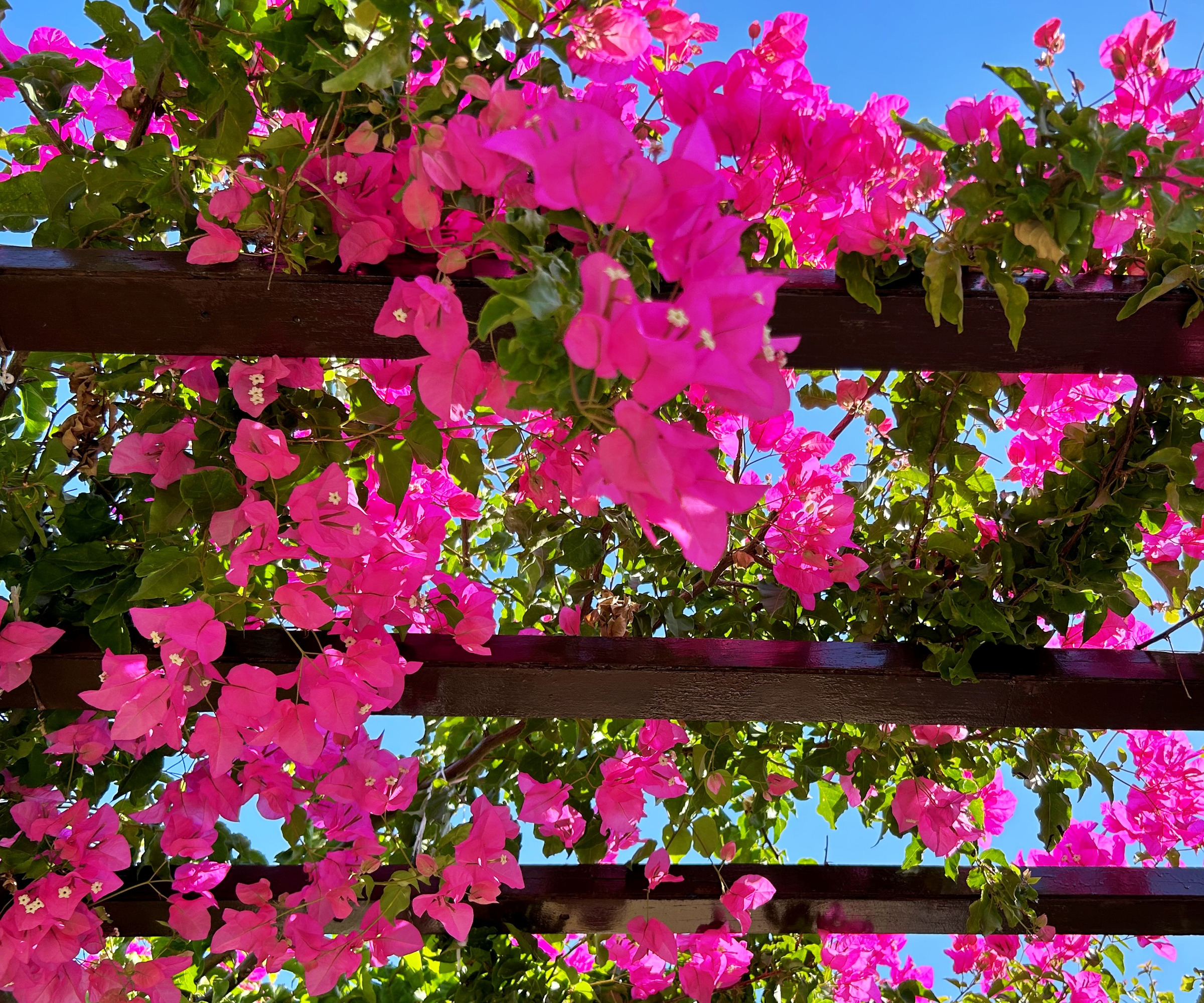
Bougainvillea is one of the most colorful climbers to grow in pots. Flowering for much of the summer and tolerant of hot and dry weather, bougainvillea is ideal for south-facing yards.
In terms of how to grow bougainvillea in pots, this vine thrives in warmer regions, including zones 8, 9 and 10. Provide as much sunshine as possible and well-draining soil.
Growing in pots means that even gardeners in cooler regions can grow this tender vine, as they can be easily protected during the winter months.
Bougainvilleas benefit from pruning in the late summer, to keep them compact and bushy, although be careful when trimming, as the stems are thorny.
FAQs
What is the best climbing plant for bees and butterflies?
If you want to attract wildlife to your vining pot displays, consider learning how to grow honeysuckle in pots. All of the best honeysuckle varieties have colorful, fragrant and nectar-rich blooms, ideal for attracting hungry insects. For a native species, try growing the coral honeysuckle, Lonicera sempervirens, in pots, which has striking red blooms and is known to be popular with hummingbirds. Native trumpet honeysuckle plants are available from Amazon.
As with any plants growing in pots, remember to regularly water and feed during spring and summer, as containers can quickly dry out when the temperature is high. For flowering climbers, consider applying a bloom booster feed in spring, to encourage your plants to produce as many flowers as possible. Try this organic Espoma bloom fertilizer, available from Amazon.
For more information, see our guide on how to fertilize container plants.
Shop climbing plant accessories

Thomas is a Content Editor within the Gardens Team at Homes and Gardens. He has worked as a professional gardener for both public spaces and private estates, specializing in productive gardening, growing food and flowers. Trained in Horticulture at the Garden Museum, he has written on gardening and garden history for various publications, including The English Garden, Gardens Illustrated, Hortus, The London Gardener and Bloom. He has co-authored a Lonely Planet travel book, The Tree Atlas, due out in 2024.
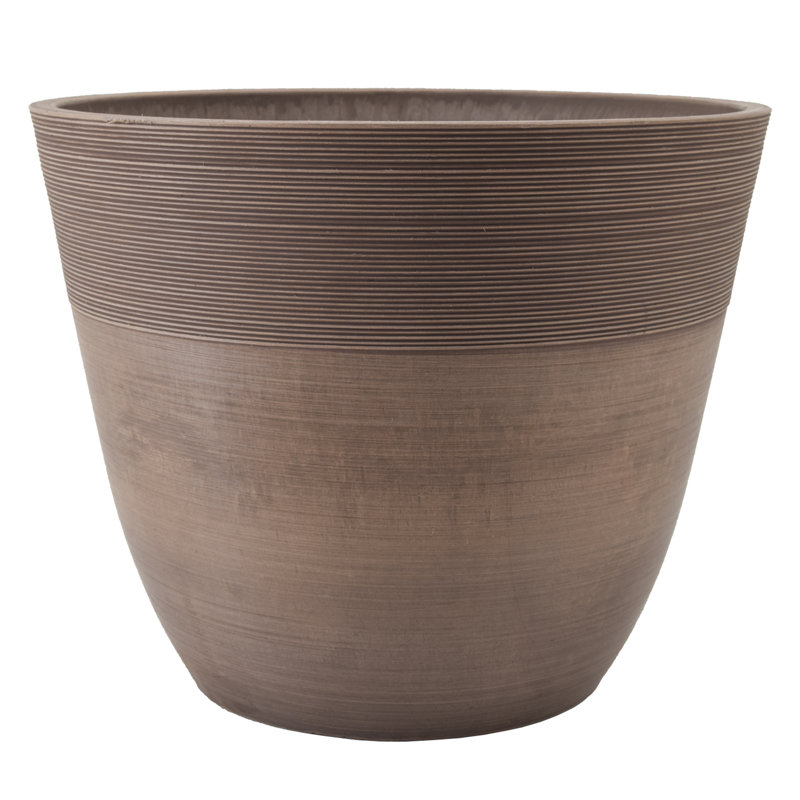
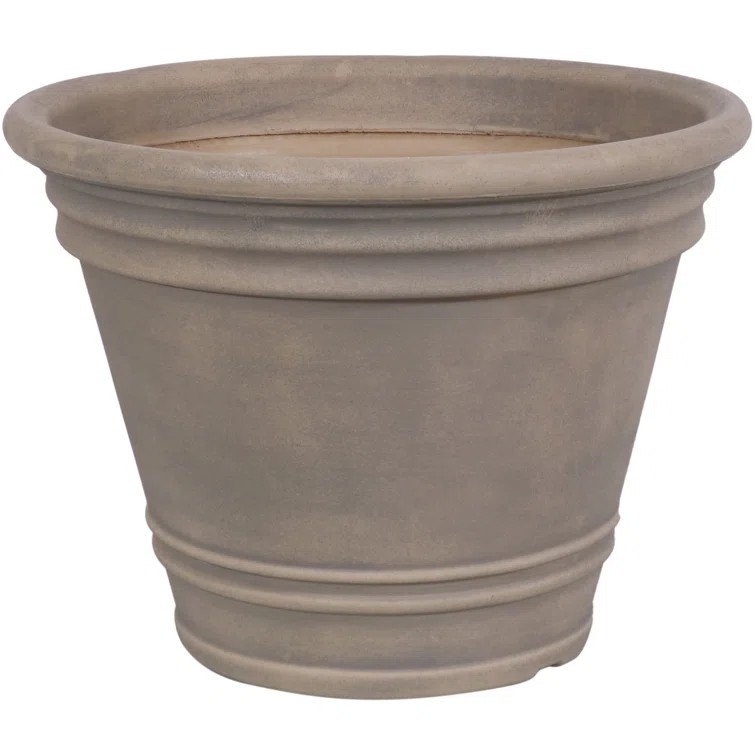
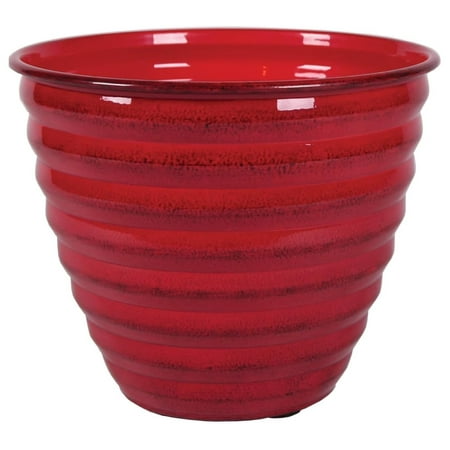
![Miracle-Gro Mg86205 General Utility Gloves – [small/medium], Synthetic Leather Padded Palm Gloves, Spandex Back, Adjustable Hook and Loop Wrist](https://cdn.mos.cms.futurecdn.net/nTAeAiC8a2MyyhZSnu3uAT.jpg)
